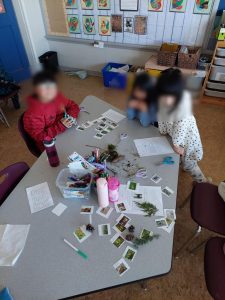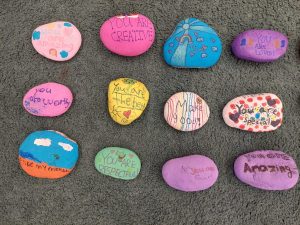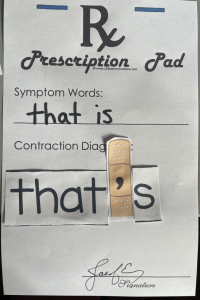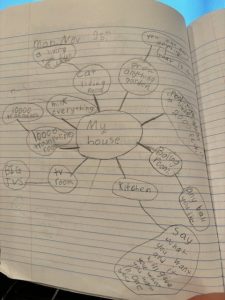Dear Division 11 Families,
We hope everyone is having a wonderful Family Day long weekend!
Week 2: Love Others 
This week, we read If You Plant a Seed and discussed how even one small act of kindness can create a ripple effect, inspiring others to spread kindness as well. Our students were encouraged to perform random acts of kindness throughout the week and add a heart to our “Kindness Tree” whenever they did something kind or received a random act of kindness from someone else. It was wonderful to see so many hearts added in just one week! We hope our students always remember how one small act of kindness can have a big impact.
We continued our theme of Friendship and “Love for Self”. Every Thursday is “Thankful Thursday” where they share something they are grateful for during Community Circle. This past week, we shared what we are grateful for about ourselves. We started by giving ourselves a hug to love ourselves. We talked about how the relationship we have with ourselves is the foundation for all other relationships so it is important to be kind to ourselves. What we say to choose to say to ourselves helps us anchor into our own strengths and believe in ourselves too. Last week, we continued to work on our affirmation statements. We are looking forward to sharing them with you!
It is also important to take such great care of the person we spend the most time with. That’s themselves! It’s the most important job they have in their life…to make good choices about eating well, getting enough sleep, staying positive and grateful which leads to happiness.
We Are Mathematicians!
This week, we continued practicing our addition and subtraction  skills, focusing on using open number lines. With this strategy, students decide where to start their number line and how to decompose, or break down, a number to add or subtract. There are multiple ways to solve problems using open number lines, allowing students to approach problems in a way that makes sense to them. (As shown in the picture, three different students each found their own way to solve 56 + 37.)
skills, focusing on using open number lines. With this strategy, students decide where to start their number line and how to decompose, or break down, a number to add or subtract. There are multiple ways to solve problems using open number lines, allowing students to approach problems in a way that makes sense to them. (As shown in the picture, three different students each found their own way to solve 56 + 37.)
 We encouraged our students to use friendly numbers—numbers that are easy to work with when adding or subtracting, such as 20, 50, or 100. For example, in the problem 27 + 9, the student broke 9 into 3 and 6, adding 3 to 27 first to make 30, which made it easier to add the remaining 6.
We encouraged our students to use friendly numbers—numbers that are easy to work with when adding or subtracting, such as 20, 50, or 100. For example, in the problem 27 + 9, the student broke 9 into 3 and 6, adding 3 to 27 first to make 30, which made it easier to add the remaining 6.
This strategy connects to the next one we will be focusing on, so our students will have more time to practice and strengthen their understanding.
Here’s a helpful resource for you to learn more about this strategy and support your child at home.
Shelly Gray – Friendly Numbers: Addition Strategy
Social Studies
Our students have been exploring how humans have created inventions and innovations to meet their needs throughout history. This week, our focus was on agriculture, specifically in Ancient Egypt. Students learned about the different ways ancient Egyptians controlled water, then compared these methods to those used in ancient Mesopotamia. To deepen their understanding, they created Venn diagrams to identify connections between the two civilizations.
Writing
On Wednesday, we did a writing snapshot, and we were so impressed with the progress our students have made since the beginning of the year! We’ve been focusing on making writing more engaging, and we encourage students to use the following strategies:
- Triple scoop words – Choosing more interesting words (e.g., instead of good, using fabulous or fantastic).
- Similes – Comparing things using like or as (e.g., My brother is as loud as a fire truck. He is wise like an owl).
- Adding dialogue – Making conversations more dynamic (e.g., instead of writing “How are you?” said Ms. Kim, students learn to write “How are you?” Ms. Kim called out, waving cheerfully).
When you are reading with your child at home and come across examples of these writing techniques, please take a moment to point them out and discuss how they make the writing more engaging. This will help reinforce what they are learning in class and encourage them to apply these strategies in their own writing.
Reading Groups
Students really look forward to our Reading Groups time. Last week, each group performed a script for Reader’s Theatre based on stories that focused on conflict resolution and showing kindness. They learned the importance of reading with expression and performed very well! This week, we continued to read books at our reading levels.
We love seeing how they support each other when they come across words they struggle with. We also appreciate their patience, collaboration, and kindness shown each time they read together. It’s always a great sign when they ASK when we are going to have Reading Groups again!
Friendship Fruit Salad on Valentine’s Day

 We are grateful to all families for contributing fruit and to our families who came to support in the classroom.
We are grateful to all families for contributing fruit and to our families who came to support in the classroom.
Students were so diligent to cut the fruit. They were all so keen and worked so hard as they chopped fruit for a solid 45 minutes! No one asked for or took a break!
So what this tells us is that they can help you prepare dinner by chopping vegetables or their own fruit for recess snacks or lunch.
We love it when we hear comments like, “This is the best day ever! Can we make fruit salad every Friday? It can be Fruit Fridays! I wish this day won’t end.”
Welcome, Mr. Evoy!
On this day, we also welcomed our SFU student teacher, Mr. Evoy, to our class. He will be with us until the end of April. He dove right in and got to know the kids. Mr. Evoy is a welcome addition! Please help us welcome him to our warm classroom community.
As always, we appreciate your time and support at home. Thank you for being our partners in your child’s learning.
With much gratitude,
Ms. Kim and Ms. Chan

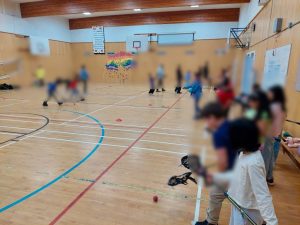



 Vancouver Warriors
Vancouver Warriors
